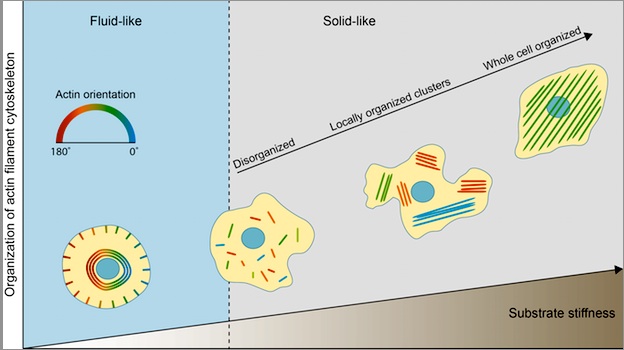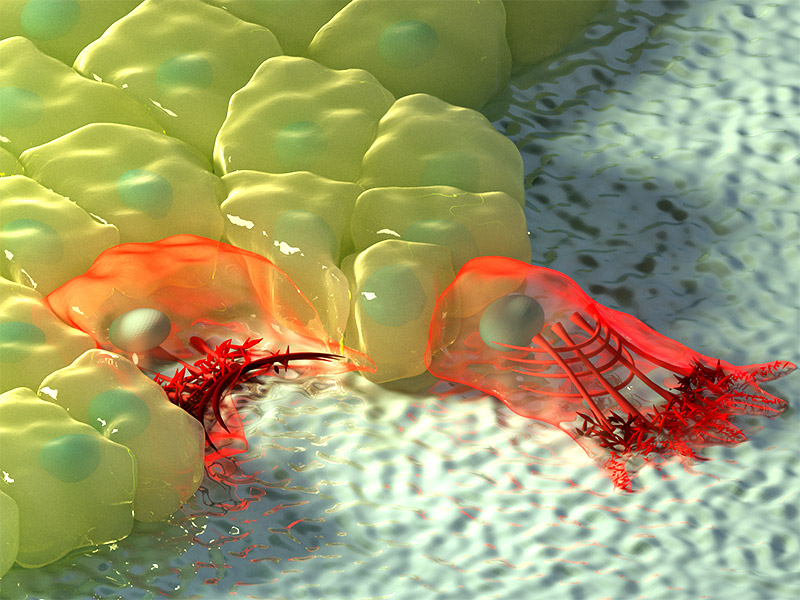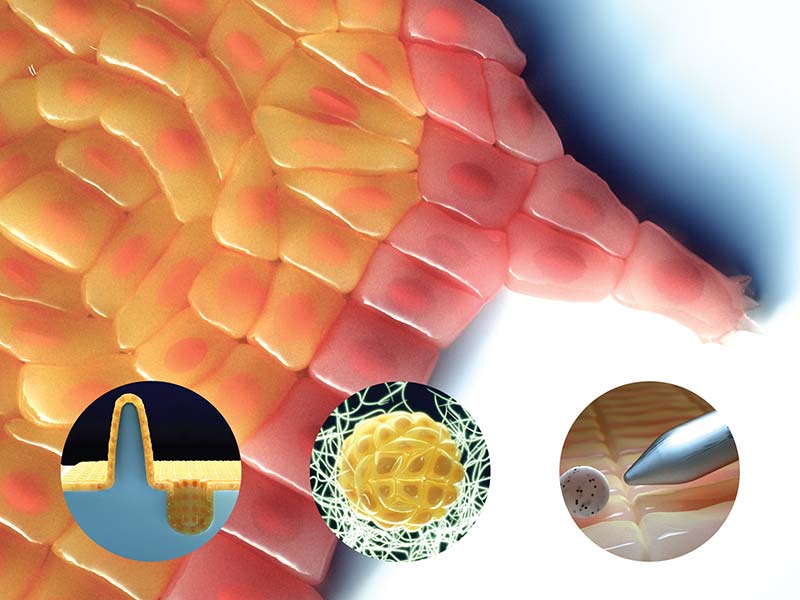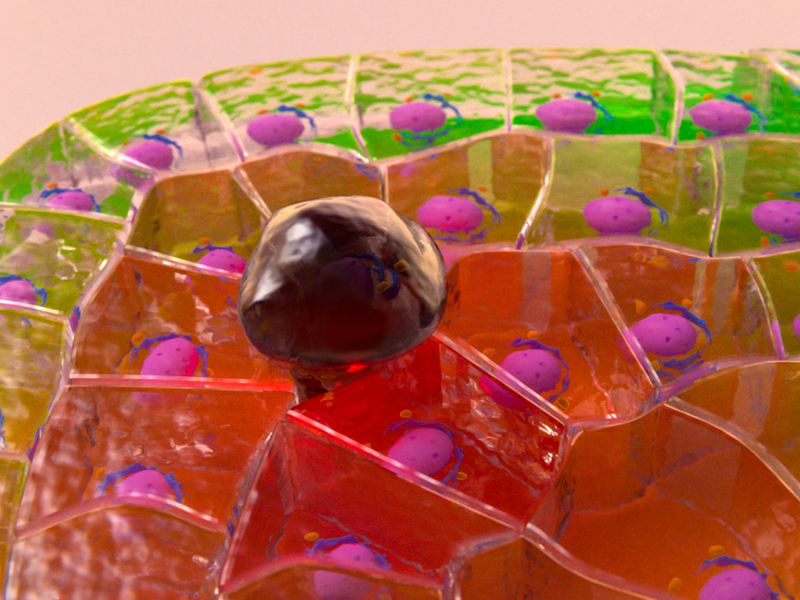Fluid on Soft, Solid on Stiff
Andrew MS Wong | JUNE 2015
A collaborative study between Singapore and France, led by researchers from the Mechanobiology Institute (MBI), National University of Singapore, has shown how cells can respond to the rigidity of their surrounding environment by adapting their internal mechanical properties. Published in Nature Communications, this study reveals that cells adapt their rheology – behaving as a fluid on soft substrates and as an elastic solid on stiff substrates through a large scale remodelling of the cytoskeleton (Gupta et al, Adaptive rheology and ordering of cell cytoskeleton govern matrix rigidity sensing. Nature Communications; doi: 10.1038/ ncomms8525).

The organization of the actin filament cytoskeleton adapts in response to substrate stiffness. On soft substrates, the cytoskeleton is fluid, with multi-directional actin filaments. Once the stiffness passes a certain point, the cytoskeleton becomes solid-like and actin filaments align in a single direction.
Large-scale cell sensing of environmental rigidity
During their lifetime, cells encounter environments of various stiffness. These changes affect cell-generated forces and as such, influence their movement, rate of division, and eventual fate. In a classic experiment, stem cells grown on a soft substrate developed into brain cells, yet the same cells became bone cells when grown on a hard substrate. Apoptosis, the process of programmed cell death, is also increased within soft environments. Interestingly, all these important processes depend on the level of cell contractility: cells pull harder on stiffer substrates than on soft ones.
External stiffness drives internal organization
Previous studies have focused on describing how the cell regulates this rigidity-sensing mechanism by local recruitment of specialized protein clusters at adhesion sites. MBI researchers, led by Prof. Benoit Ladoux, together with collaborators from CNRS, Paris Diderot, and Pierre et Marie Curie Universities (Paris, France) reveal that another underestimated mechanism, a large-scale remodelling of the internal cytoskeleton network, also plays an important role. To do so, they used an imaginative inverted experimental setup to observe cytoskeleton reorganization in live cells on substrates of varying stiffness. Cells were grown on a surface of flexible micro-needles whose stiffness can be tuned by changing the height of the needles.
Important processes depend on the level of cell contractility: cells pull harder on stiffer substrates than on soft ones.
Based on experiments and theoretical modelling, they discovered that the cytoskeleton adapts its rheology – from fluid-like on soft substrates to solid-like on stiff substrates as well as its internal organization, from disorganized to organized, to dictate the response of the cell to substrate rigidity. On a soft substrate, cells experience low surface friction, which leads to increased cytoskeleton flow towards the cell centre, and thus to a fluid-like state. These circular, fluid-like cells do not polarize. As the substrate stiffness increases, the cell substrate friction also increases. This leads to the assembly of large and stable contractile bundles of cytoskeletal filaments, which organize into locally aligned clusters, while remaining disorganized at the whole cell level. These contractile bundles, which are rigid, lead to a solid-like state of the cell. As the substrate stiffness is further increased, these contractile bundles remodel themselves and align in a single preferential direction, becoming organized at the whole cell level, and establishment of cell polarity. This evolution from a disorganized to organized state in a biological system is similar to that observed in well- known physical systems such as liquid crystals.
This global sensing mechanism may explain various cellular responses to rigidity, such the preferential migration of tissue cells towards stiffer regions or even the increase of the apoptotic rate on softer substrates. Consequently, these findings could have important implications in pathological situations such as cancer where tumours appear as a rigid mass compared to healthy tissues, but also in physiological processes such as cell differentiation where cytoskeleton organization and forces may favour different outcomes.
Corresponding author: benoit.ladoux@univ-paris-diderot.fr









